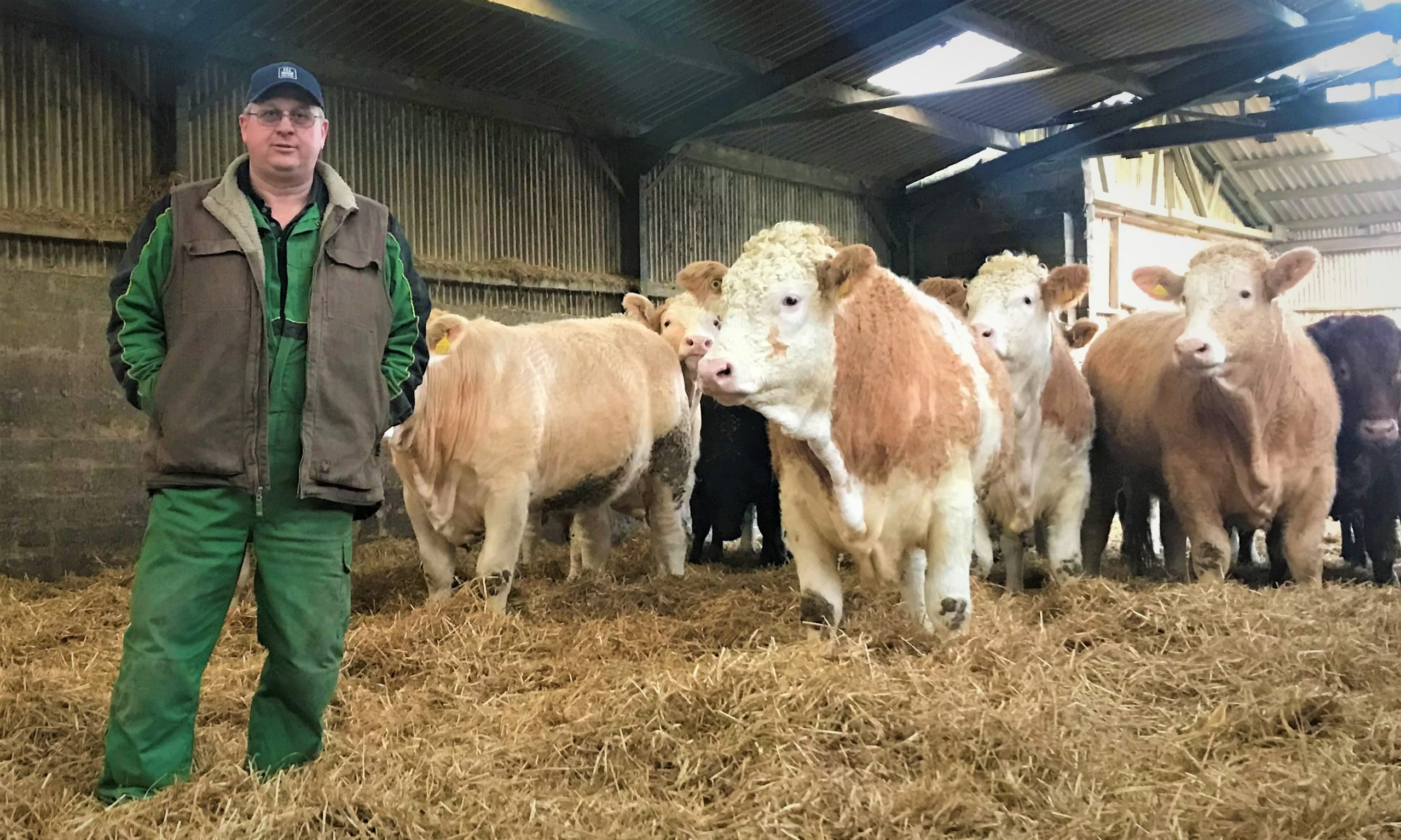At West Greenland, Andrew, Joe and Iain MacKay are focused on running a profitable and sustainable farming business by keeping up with the latest science and innovation to continue improving their efficiency.
Along with a substantial arable enterprise and a contracting business, the team also have a keen interest in cattle. Their suckler herd comprises 130 Simmental cross cows, which are all bulled with Aberdeen Angus and all progeny finished on the home farms. Bull calves are kept entire, to maximise weight gain and reduce the time they need to stay on farm. In addition to the suckler herd, each year another 800-1000 head of cattle are bought locally or from Orkney and Dingwall markets. Andrew’s ideal beast to buy is a 450-500kg, which he can take home and transition straight onto a cereal diet. There are also some lighter cattle bought in, around 400kg which are put onto a silage based growing ration when they come home. Depending on the time of year, these lighter cattle will be grazed before transitioning onto the finishing ration. Most breeds are bought, although there is a trend towards Charolais and Simmental, with some Limousin and Aberdeen Angus too.
Transition is a critical time
Transition is the key time in this system when things can go wrong, resulting in sick cattle which take time to recover or must be sold without reaching their potential. Over the years, Andrew has been on a mission to fine tune his system.
Once home, cattle are offered silage and straw for 24 hours to fill their rumens, before hoppers are filled with our Beefstock nuts, sourced through W & A Geddes in Thurso. Over the course of 3 weeks, rolled barley is gradually introduced. Once happily on feed, the Beefstock is replaced with a high protein concentrate called Champion Rumitech 35, with the final ration 12.5% Champion Rumitech 35 and 87.5% rolled barley.
All cereal grown by the brothers is fed, plus some extra locally sourced at harvest time, with local farmer David Campbell from Bardnaclavan coming in to bruise. This means the only bought in feed is the protein concentrate, which is already mineralised.
Trialling Alkacid vs sodium bicarbonate
Continually looking for the next marginal gain, Andrew had read about a trial we’d carried out in Aberdeenshire with our Alkacid rumen buffer, where feeding Alkacid throughout transition had seen an improvement of 350g/head/day liveweight gain compared to not feeding a buffer. Keen to try this out for himself, Andrew set up his own trial at home. This time, the trial compared Alkacid against sodium bicarbonate, a buffer which is traditionally used in the industry. Andrew’s own trial showed an additional liveweight gain of 250g/head/day for the cattle fed Alkacid throughout transition.
Jill Hunter, our Beef & Sheep Nutritionist commented “Alkacid is a rumen buffer which works in a few unique ways, including stimulating animals to make more of their own saliva. Alkacid combines rumen buffers, essential oils and natural hot spices in a honeycomb structure, which will absorb a lot more acid than bicarbonate. The rumen buffers start neutralising acid straight away and continue for 24 hours. These are supported by the essential oils slowing down starch-digesting rumen microbes and hot spices to increase water intake and therefore boosting saliva production. It’s just about getting back to basics and getting the rumen balance right. This in turn enhances rumen health, overall animal health and subsequent performance”.
Andrew added: “Feeding Alkacid costs around 9p/head/day and bicarbonate around 8p. So to get an extra 250g of liveweight for 1p investment, feeding Alkacid is a no brainer to me”.

